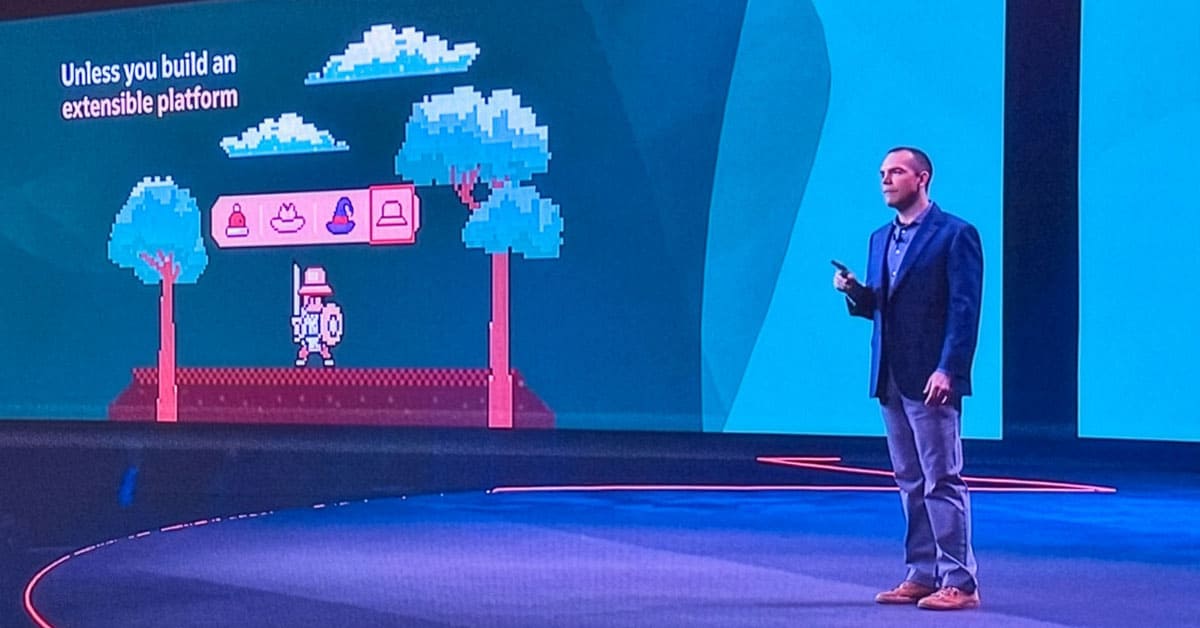Oracle’s Vision Comes Together: The Company That Now Builds AI from Silicon to Service
Principal Analyst

There comes a point when a company stops talking about what it wants to become and starts proving what it already is. That was Oracle this week at AI World 2025 in Las Vegas, a company now emerging as a unified force rather than a collection of disconnected ambitions. For years, Oracle’s story has been a mix of big ideas and fragmented delivery: the next-generation database, the all-in-one application suite, and the next large hyper-scaler. This year, the pieces fit. Oracle is executing across the entire stack—from hardware and infrastructure to databases and applications—with AI integrated at every level. And this time, it works.
From Building a Cloud to Building a Platform
Recently named co-CEO Clay Magouyrk opened with what has become Oracle’s defining principle: performance, cost, and security. Oracle Cloud infrastructure (OCI), he said, was designed from the ground up to be the highest-performance, lowest-cost, and most secure cloud infrastructure on the market. That vision has finally matured into something tangible.
Magouyrk described a decade of deliberate engineering decisions that separated Oracle from the rest of the hyperscaler field. Bare metal servers, dynamic partitioning, and consistent global pricing now form the foundation of a platform that can run anywhere—in Oracle regions, customer data centers, or other public clouds. The Dedicated Region 25, reduced to three racks, represents a breakthrough in scalability and cost efficiency that lets Oracle deploy a full cloud region wherever customers need it. It reminded me of a Verner Vogels keynote at AWS. (That’s a compliment, Clay!) This ability to scale up or down, while keeping the same performance and pricing model, is what makes Oracle’s infrastructure distinct. It is not just competitive in the cloud market; it has become the economic backbone for everything Oracle is building in AI.
With an engineer as Co-CEO, Oracle has shown that its heritage is its future—it relies first on advancing core technologies.
The Database Becomes an AI Platform
The most profound change came from Juan Loaiza and T.K. Anand who outlined how the Oracle Database has evolved into a full AI platform. Database 26AI looks to be more than a feature update. It is a redefinition of how enterprises bring AI and data together. The model is simple but strategically important. Oracle now enables customers to run AI directly against their own private data without exporting or duplicating it. Loaiza described this as “bringing AI to your data.” In a market where others require customers to move or expose data to external AI services, this represents both a technical and compliance advantage.
Equally significant, Oracle’s data and AI capabilities run in any environment: on-premises, in OCI, or across other cloud platforms. As Anand put it, “We bring AI to where the customer is. We are not asking them to change everything for AI.” Flexibility is not a trait one would historically associate with Oracle, having essentially invented the multi-cloud, it can certainly claim it today. Behind the scenes, the data layer has been re-engineered for AI. Data is being vectorized, annotated, and made directly accessible to Oracle’s new agentic systems—all within the Oracle database. This forms the foundation for the flexibility now appearing in Oracle’s applications.
Applications That Work Together
Oracle has been promising (like every other software vendor) that AI would reshape the applications space. Generative AI alone fell well short of the mark. What is now apparent is that the strength of Oracle as a company lies in its holistic approach to AI at every level of the technology stack. Providing an in-house created framework and tools for AI execution and agent creation enables customers – and Oracle software developers – with an impressive set of tools and capabilities.
EVP Steve Miranda reported that Oracle now offers more than six hundred agentic AI capabilities across Fusion. These agents are not just prototypes; they are embedded, production-ready templates in live systems that have gone through Oracle’s development and testing process. Through the no-code Agent Studio and the Agent Marketplace, customers and partners can create their own agents or modify Oracle’s prebuilt ones to fit their business needs. When I asked Miranda when the paradigm shift for application development would flip such that AI leads process design thinking, his reply was “We’re there.”
Here is what stands out: Oracle customers can choose which AI model they want to run their agents against. Those who use Oracle’s delivered base model pay no cost for the agentic execution. This approach contrasts sharply with competitors, many of whom are experimenting with usage-based pricing models that add unpredictable AI costs. Because Oracle controls the full technology stack—from its hardware and database up through its applications—the economics of AI execution are fundamentally different. There are no third-party infrastructure markups, and Oracle’s cost of running AI workloads is lower than that of providers who must consume capacity from others.
This pricing and control strategy could prove to be one of the company’s biggest differentiators as AI usage scales. Adoption reflects that value. About sixty percent of HCM customers are already using generative or agentic AI capabilities, most deploying two or three features and expanding from there. Oracle Grow, the personal AI career coach, exemplifies this shift. It identifies skills gaps, recommends development plans, and continuously adapts as employees progress. These are not experimental add-ons; they are embedded, operational, and showing tangible results.
From Product Sales to Outcome Partnerships
Oracle’s other recently announced Co-CEO, Mike Sicilia, captured Oracle’s internal transformation. Internally, Oracle has streamlined how it engages with customers. It has consolidated its sales approach, reduced redundancies, and aligned its business around unified account teams that span infrastructure and applications. Oracle also runs all of its internal systems on OCI, creating a feedback loop between engineering and real-world usage that accelerates iteration and strengthens reliability.
Why This Maturity Matters
For higher education, Oracle’s progress signals something more than a vendor milestone. Universities have long struggled with fragmented systems, unpredictable costs, and technologies that cannot keep up with modern expectations. What Oracle is building has the potential to stabilize that landscape not only from an applications perspective, but also from a data management and AI view.
I had the opportunity to meet with Dr. Matthew (Matt) Davis from Bellevue University, who is already showing what that future could look like. His team is developing a fully automated AI-based recruitment-through-admissions process that will be hands-off within the next year, with Oracle serving as the coordinating AI platform.
Bellevue’s work demonstrates how AI, when grounded in a unified data and application environment, can simplify and accelerate complex institutional processes. That is the real story here. Oracle’s emerging maturity matters because it redefines what enterprise technology can mean for sectors like higher education. It offers a path toward automation and intelligence that can be simplified—and thereby more easily adopted and secured.
Oracle seems to be reaching the point it was aiming for all along: a complete, vertically integrated technology company that knows what it builds, understands why it matters, and has the infrastructure to deliver it.
What to Watch For in the Coming Months:
- Delivery of the 26AI database version in early 2026. It’s a major development for AI in the enterprise.
- Partner agent creation in the marketplace, and partner use of agents to streamline application implementation.
- Oracle Application teams’ ability to design AI-first processes. This is especially critical for Oracle Student to leapfrog incumbents.
Join the conversation by sharing your thoughts with me on LinkedIn.
You May Also Like:
- Reflections from D2L Fusion 2025: Innovation Grounded in Research and Relationships
- Anthology Together 2025: A Turning Point Toward a Unified, AI-Driven Student Experience
Originally posted by Dave Kieffer on LinkedIn. Be sure to follow him there to catch all his great industry insights.
Categories
Share Article:

Other Posts From this Author:
© Copyright 2025, The Tambellini Group. All Rights Reserved.